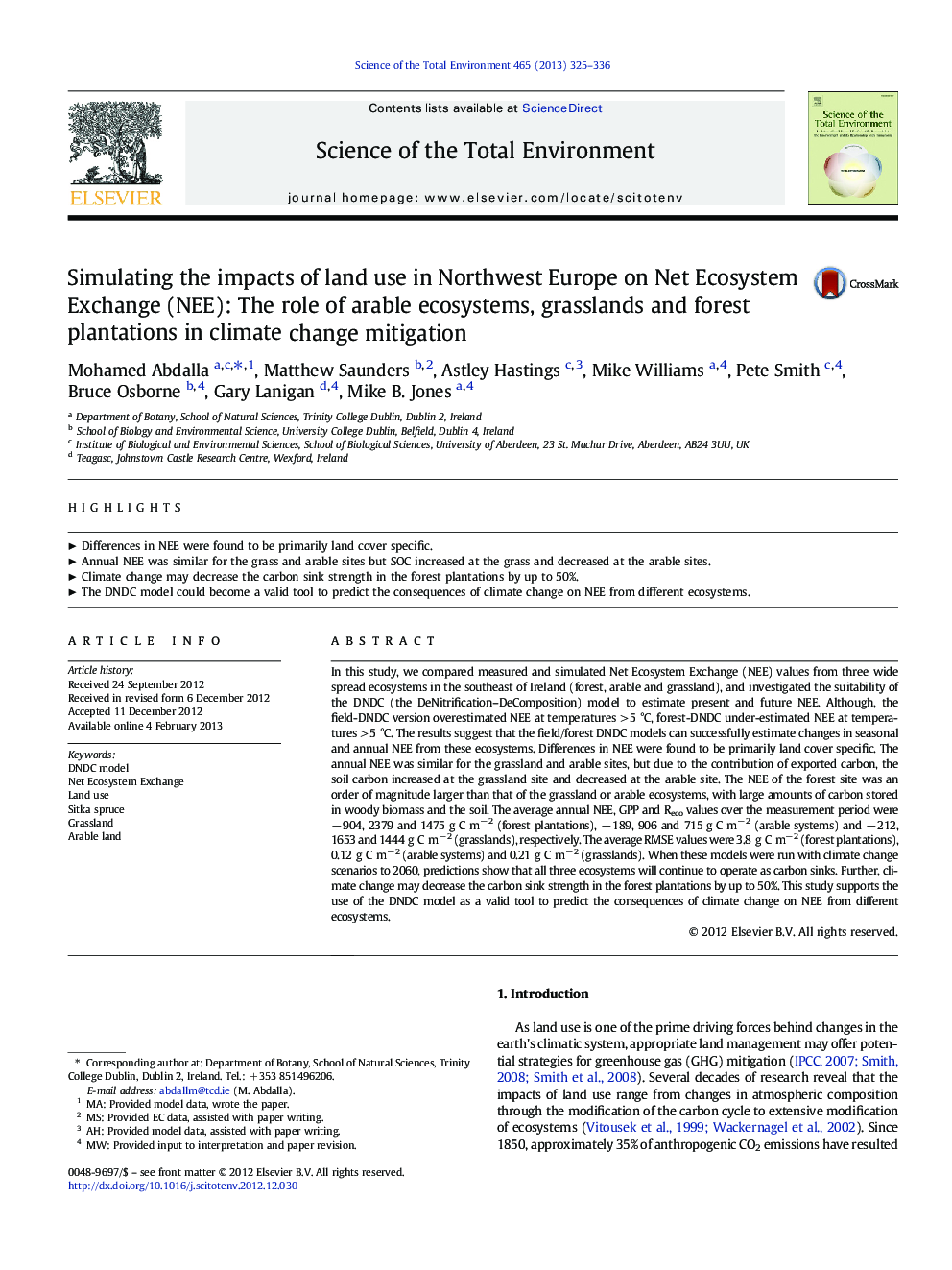| کد مقاله | کد نشریه | سال انتشار | مقاله انگلیسی | نسخه تمام متن |
|---|---|---|---|---|
| 4428708 | 1619797 | 2013 | 12 صفحه PDF | دانلود رایگان |

In this study, we compared measured and simulated Net Ecosystem Exchange (NEE) values from three wide spread ecosystems in the southeast of Ireland (forest, arable and grassland), and investigated the suitability of the DNDC (the DeNitrification–DeComposition) model to estimate present and future NEE. Although, the field-DNDC version overestimated NEE at temperatures > 5 °C, forest-DNDC under-estimated NEE at temperatures > 5 °C. The results suggest that the field/forest DNDC models can successfully estimate changes in seasonal and annual NEE from these ecosystems. Differences in NEE were found to be primarily land cover specific. The annual NEE was similar for the grassland and arable sites, but due to the contribution of exported carbon, the soil carbon increased at the grassland site and decreased at the arable site. The NEE of the forest site was an order of magnitude larger than that of the grassland or arable ecosystems, with large amounts of carbon stored in woody biomass and the soil. The average annual NEE, GPP and Reco values over the measurement period were − 904, 2379 and 1475 g C m− 2 (forest plantations), − 189, 906 and 715 g C m− 2 (arable systems) and − 212, 1653 and 1444 g C m− 2 (grasslands), respectively. The average RMSE values were 3.8 g C m− 2 (forest plantations), 0.12 g C m− 2 (arable systems) and 0.21 g C m− 2 (grasslands). When these models were run with climate change scenarios to 2060, predictions show that all three ecosystems will continue to operate as carbon sinks. Further, climate change may decrease the carbon sink strength in the forest plantations by up to 50%. This study supports the use of the DNDC model as a valid tool to predict the consequences of climate change on NEE from different ecosystems.
► Differences in NEE were found to be primarily land cover specific.
► Annual NEE was similar for the grass and arable sites but SOC increased at the grass and decreased at the arable sites.
► Climate change may decrease the carbon sink strength in the forest plantations by up to 50%.
► The DNDC model could become a valid tool to predict the consequences of climate change on NEE from different ecosystems.
Journal: Science of The Total Environment - Volume 465, 1 November 2013, Pages 325–336